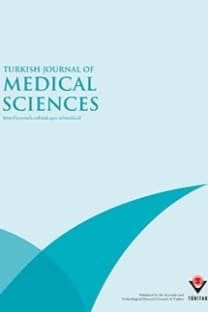Turkish validity and reliability study of type 2 diabetes stigma assessment scale
Turkish validity and reliability study of type 2 diabetes stigma assessment scale
___
- 1. International Diabetes Federation. The Diabetes Atlas. 9th ed. 2019.
- 2. Satman İ, Ömer B, Tütüncü Y, Kalaca S, Gedik S et al. Twelveyear trends in the prevalence and risk factors of diabetes and prediabetes in Turkish adults. Eureopean Journal of Epidemiology 2013; 28: 169-180. doi: 10.1007/s10654-013- 9771-5
- 3. Arslan H, Konuk DS. Stigma, Spirituality and comfort concepts in Meleis’s concept development process. Maltepe University Journal of Nursing Science and Art 2009; 2 (1): 51-58.
- 4. Oran Tuna N, Senuzun F. A chain that needs to be broken in society: HIV / AIDS stigma and coping strategies. Journal of International Humanities 2008; 5 (1): 1-16.
- 5. Alonson J, Buron A, Bruffaerts R, He Y, Posada-Villa J et al. Association of perceived stigma and mood and anxiety disorders: results from the World Mental Health Surveys. Acta Psychiatrica Scandinavica 2008; 118: 305-314. doi: 10.1111/j.1600-0447.2008.01241.x
- 6. Burn JY, Solomon SE, Miller C, Forehand R. Measurement of stigma in people with HIV/AIDS: a reexamination of the HIV Stigma Scale. AIDS Education and Prevention 2007; 19 (3): 198-208. doi: 10.1521/aeap.2007.19.3.198
- 7. Macq J, Solis A, Martinez G, Martiny P. Tackling tuberculosis patients’ internalized social stigma through patient centred care: an intervention study in rural Nicaragua. BMC Public Health 2008; 8 (8): 1-10 doi: 10.1186/1471-2458-8-154
- 8. Cam O, Bilge A. mental illness in turkey / patient beliefs, attitudes and stamping process: a systematic review. Journal of Psychiatric Nursing 2013; 4 (2): 91-101. doi: 10.5505/ PHD.2013.92300
- 9. Carr D, Jaffe KJ, Friedman MA. Perceived interpersonal mistreatment among obese Americans: do race, class, and gender matter? Obesity (Silver Spring) 2008; 16 (2): 60-68. doi: 10.1038/oby.2008.453
- 10. Puhl RM, Brownell KD. Confronting and cog with weight stigma: an investigation of overweight and obese adults. Obesity (Silver Spring) 2006; 14 (10): 1802-1815. doi: 10.1038/ oby.2006.208
- 11. Kato A, Fujimaki Y, Fujimori S, Isogawa A. Onisshi Y et al. Psychological and behavioural patterns of stigma among patients with type 2 diabetes: a cross-sectional study. BMJ Open 2017 (7): 1-7. doi: 10.1136/bmjopen-2016-013425
- 12. Kato A, Fujimaki Y, Fujimori S, Izumida Y. Suziki R et al. A qualitative study on the impact of internalized stigma on type 2 diabetes self-management Patient Education and Counseling, 2016 (99): 1233-1239, doi: 10.1016/j.pec.2016.02.002
- 13. Liu NF, Brown AS, Folias Younge MF, Guzman SJ et al. Stigma in people with type 1 or type 2 diabetes. Clinical Diabetes 2017; 35 (1): 27-34. doi: 10.2337/cd16-0020
- 14. Browne J, Ventura AD, Mosely K, Speight J. Measuring the stigma surrounding type 2 diabetes: development and validation of the type 2 diabetes stigma assessment scale (DSAS-2). Diabetes Care 2016; 39 (12): 2141-2148. doi: 10.2337/dc16-0117
- 15. Burns N, Grove SK. The Practice of Nursing Research: Conduct, Critique, and Utilization. WB Saunders, London. 1997; 288-326.
- 16. Cole DA. Utility of confirmatory factor analysis in test validation research. Journal of Consulting and Clinical Psychology 1987; 55: 584-594.
- 17. Tavsancil E. Attitudes Measurement and Data Analysis with SPSS. Ankara, Turkey: Atlas Publisher, 2010.
- 18. Tezbaşaran A. Likert Type Scale Development Guide. 2nd ed. Turkish Ankara, Turkey: Psychological Association Publication, 2008.
- 19. Polit D, Beck CT. Nursing Research: Generating and Assessing Evidence for Nursing Practice. 8th ed. London, UK: Wolters Kluwer/Lippincott Williams & Wilkins. 2008.
- 20. Phelan SM, Griffin JM, Jackson GL, Zafar SY, Hellerstedt W et al. Stigma. perceived blame, self-blame, and depressive symptoms in men with colorectal cancer. Psychooncology 2013; 22 (1): 65-73. doi: 10.1002/pon.2048
- 21. Cho J, Choi EK, Shin DW, Cho B, Kim C et al. Association between cancer stigma and depression among cancer survivors: a nationwide survey in Korea. Psycho‐Oncology 2013; 22 (10): 2372-2378. doi: 10.1002/pon.3302
- 22. Ernst J, Mehnert A, Dietz A, Hornemann B, Esser P. Perceived stigmatization and its impact on quality of life - results from a large register-based study including breast. colon. prostate and lung cancer patients. Cancer 2017; 17 (1) 741: 1-8. doi: 10.1186/ s12885-017-3742-2
- 23. Yilmaz M, Dissiz G, Göcmen F, Kurtulus Usluoglu A, Alacacıoglu A. The attitude of cancer (cancer stamp) survey questionnaire - the turkish validity and reliability study of the turkish version. Anadolu Journal of Nursing and Health Sciences 2017; 20 (2): 99-106. doi: 10.4103/apjon.apjon_10_17
- 24. Gredig D, Bartelsen-RA. Diabetes-related stigma affects the quality of life of people living with diabetes mellitus in Switzerland: implications for healthcare providers. Health and Social Care in the Community 2017; 25(5): 1620-1633. doi: 10.1111/hsc.12376
- 25. Kalra B, Kalrai Sharma A. Social stigma and discrimination: a care crisis for young women with diabetes in India. Diabetes Voice 2009; 54 (special issue): 37-9. PMCID: PMC3748558
- ISSN: 1300-0144
- Yayın Aralığı: 6
- Yayıncı: TÜBİTAK
Pancreas and kidney changes in type 2 diabetes patients: the role of diffusion-weighted imaging
Adil DOĞAN, Adnan ÖZDEMİR, Mehmet Hamdi ŞAHAN, Yasemin Mirace KARADENİZ BİLGİLİ, Neşe ASAL, Aşkın GÜNGÜNEŞ
Ömer Fatih NAS, Celal ÇİNAR, İsmail ORAN, Mehmet KORKMAZ, Bahattin HAKYEMEZ
Popliteal artery aneurysms treatments: early midterm results of the use of endovascular stent grafts
Kaptanıderya TAYFUR, Mehmet Şenel BADEMCİ
An investigation of the factors that influence functional improvement in stroke rehabilitation
, Serkan TAŞ, Onur ALTUNTAŞ, Alp ÇETİN
Mirzaman HUSEYNOV, Ali Ekber HAKALMAZ
Gülendam BOZDAYI, Sidre ERGANİŞ, Fatma Nur AKSAKAL, Kayhan ÇAĞLAR, Meltem YALINAY, Özlem GÜZEL TUNÇCAN, Hasan Selçuk ÖZGER, Murat DİZBAY
Yılmaz ÖNAL, Murat VELİOĞLU, Hakkı Muammer KARAKAŞ, İsmail YARDIMCIOĞLU
Evaluation of schwannoma using the 3D-SPACE sequence: comparison with the 3D-CISS sequence in 3T-MRI
Murat UÇAR, İsmail AKDULUM, Enes GÜRÜN, Pınar KILIÇ, Nil TOKGÖZ
Erdem KARABULUT, Adnan ÇALIK, Davut DOHMAN, Şükrü OĞUZ, Kadir TOMAS, Muhammed Selim BODUR, Serdar TOPALOĞLU, Hakan KÜÇÜKASLAN
